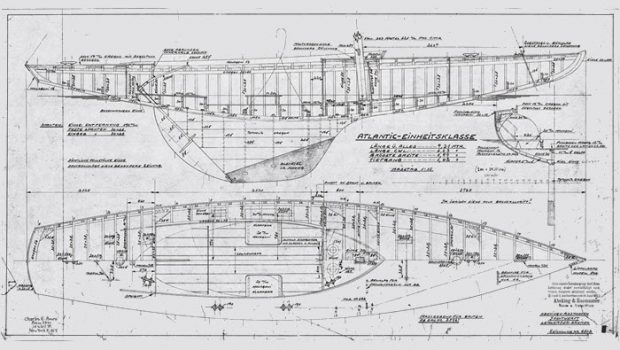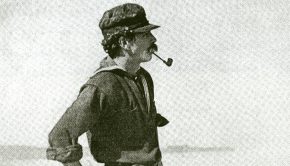Birth and survival of the Atlantic class
Published on August 26th, 2021
In 1928, Starling Burgess designed a 30-foot sloop that would become the one-design Atlantic. Fleet racing continues today in the northeast, with yachting historian John Rousmaniere reporting on the birth and survival of the Atlantic class for WoodenBoat magazine:
The 1920s were a boom time for all Americans, but especially sailors. In the thriving economy, old waterfronts were converted from commercial ports to yacht clubs, many of them devoted to the new idea of junior sailing with equal opportunity for girls and boys.
One of the best-known young sailors of the time was Lorna Whittelsey Hibberd. A graduate of the junior program founded in 1924 by the Indian Harbor Yacht Club in Greenwich, Connecticut, in her teens and twenties she won five national women’s championships for the Adams Cup and many other prizes as well against sailors of all ages.
“All summer we mostly sailed,” she recalled many years later in an interview with Mystic Seaport’s oral historian, Fred Calabretta. “We used to go down the Sound. We would sail down and sail back, which horrifies people now because they either get towed, or always start off American or Larchmont [yacht clubs]. It was good fun because we learned a whole lot that we never would have learned [otherwise].” There weren’t many days off, she added. “You had to go to church. The sailors didn’t all go to church.”
Sailors like that were, and still are, drawn to challenging boats, and if anyone was eager to create such a boat, he was Starling Burgess. When Burgess turned 50 in 1928, his career as a yacht designer was reaching a new peak of activity and success.
As Llewellyn Howland III writes in his recent biography of Burgess, No Ordinary Being, the radical staysail rig that pushed NIÑA, the schooner of his design, to victory in that year’s Transatlantic and Fastnet races, “offered the yachting world dramatic evidence that Starling Burgess was ready to move from the regional onto the national and indeed the international stage.”
The Burgess-designed M-class sloop PRESTIGE, meanwhile, was winning armfuls of trophies on the New England racing circuit for her owner-skipper Harold Vanderbilt, who in his careful way was developing the relationship with Burgess that led to three AMERICA’s Cup victories in the 1930s. – Full report









 We’ll keep your information safe.
We’ll keep your information safe.